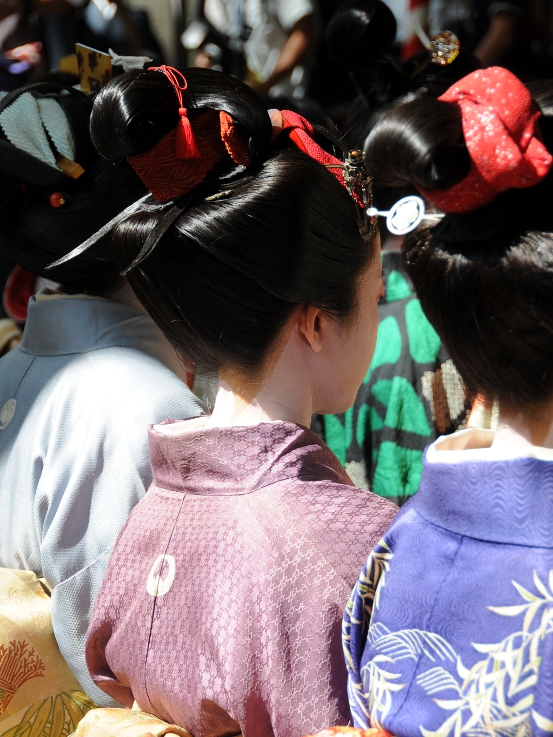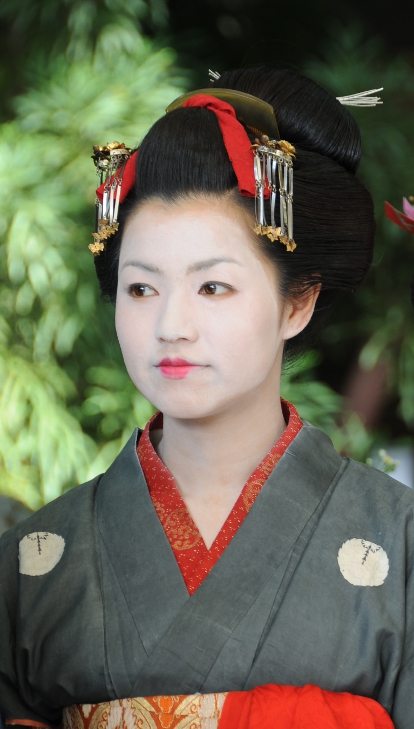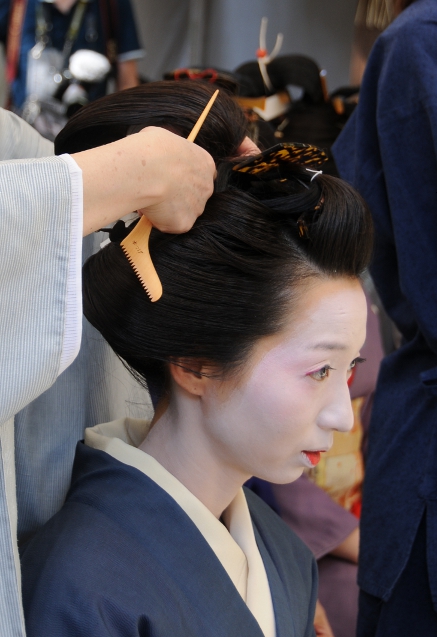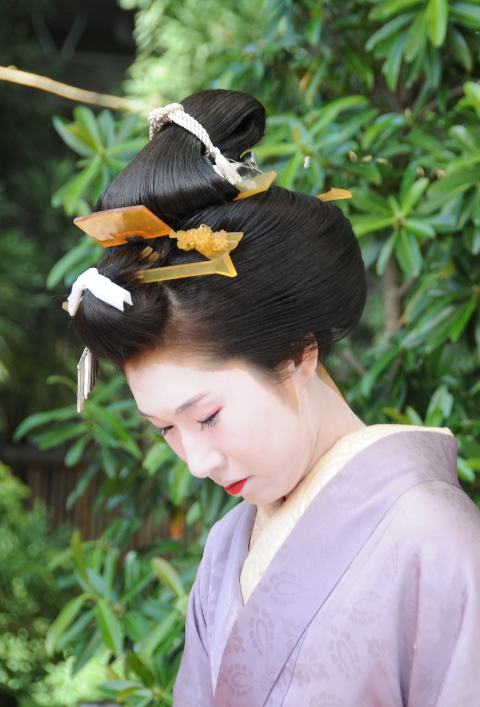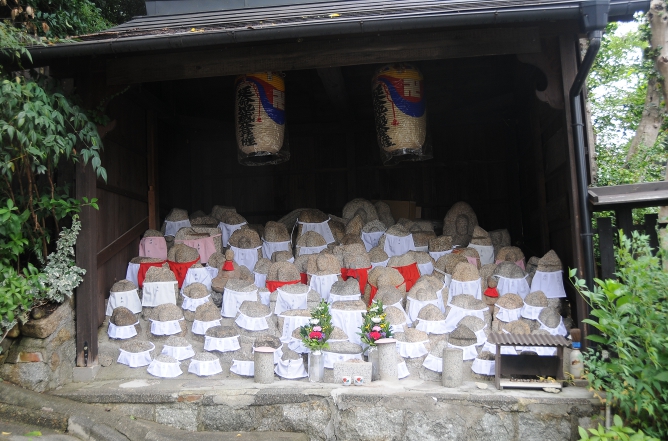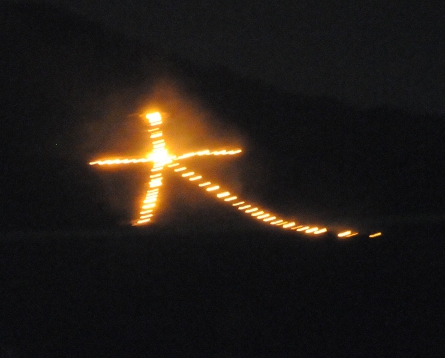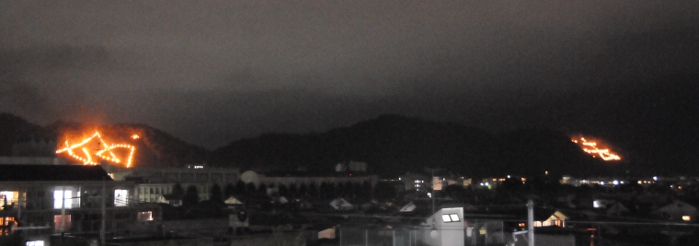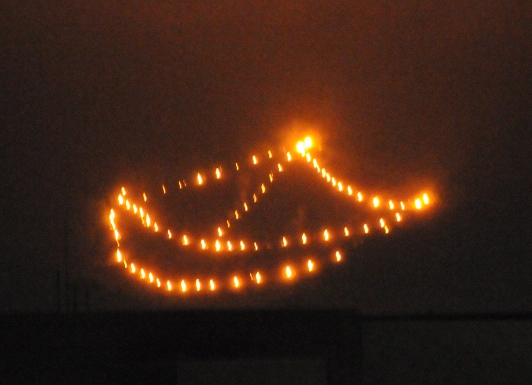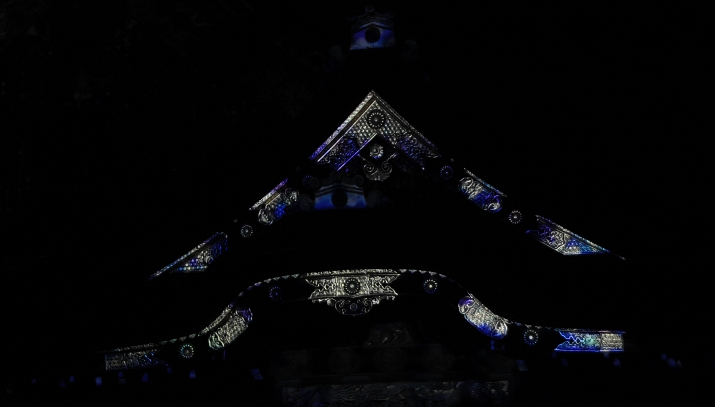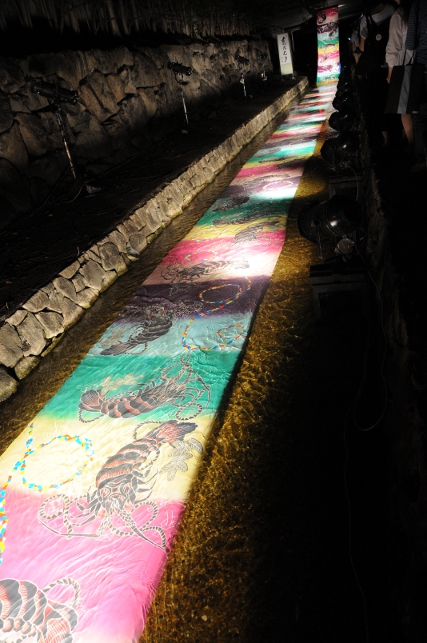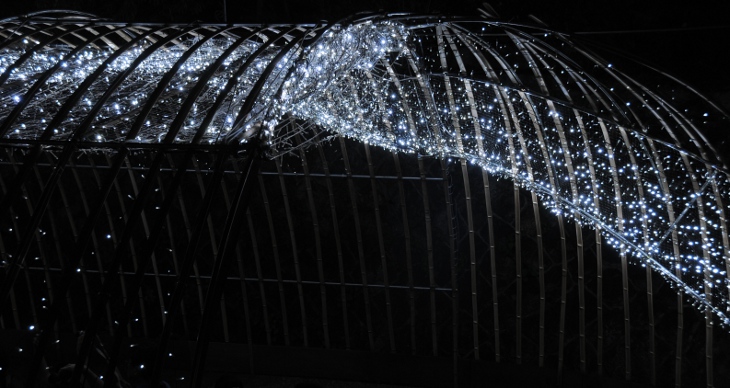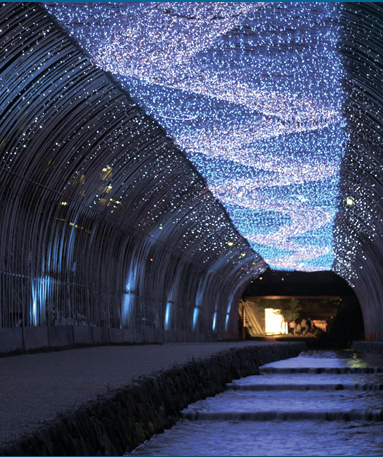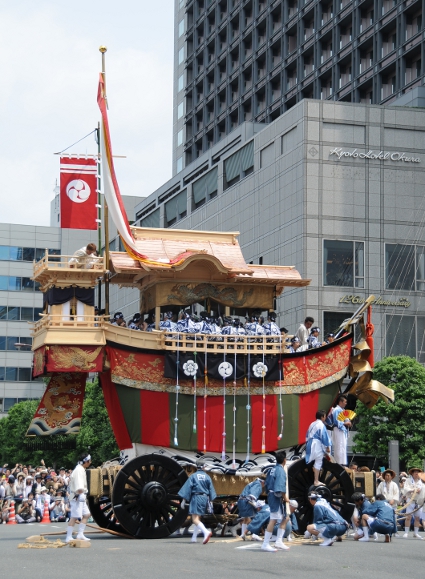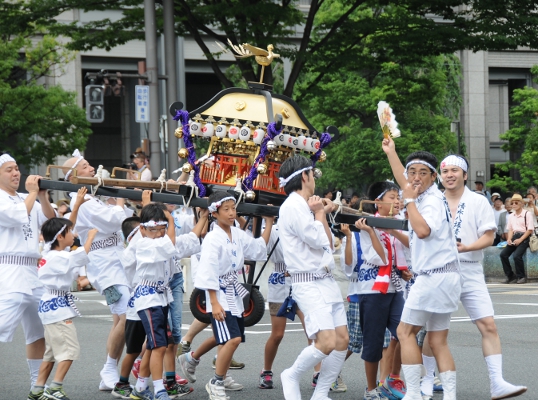The last three days were very busy, I was on my feet – literally – for more than eight hours each day… When I came home last night I was so tired, I went to bed at around ten, hence the delay in my report, but here it is, finally:
Wednesday night was the last evening of the yoiyama for the Saki matsuri parade. Just like last year, from 6 pm the streets of the inner city where the floats had been built were closed for traffic, and were turned into a huge pedestrian area. It was very crowded; when I looked from Yasaka shrine over Shijo street, it was filled with people, the heads of the Japanese turning the space into a black mass. It had been a very hot day and it was a lovely night, but because it was so crowded, the feeling was more hectic and much less relaxed than last year.
I had fun though, trying out new street food: pancakes made from takoyaki batter, rolled up and then topped with all sorts of condiments. I had one with mayo, parsley, dried fish flakes, and ketchup, thus each bite tasted differently. Altogether, there were at least four different types. For safety reasons I did not try the one with the fried egg on top: although seemingly delicious, the yolk still looked rather runny… Also, I have to admit that I succumbed to shopping and bought a tengui, a traditional, thin Japanese towel, that was sold at the stand of the boat-float, which always comes last in the parade. I bought this one because I really liked the phoenix on it, what do you think:
The biggest novelty – and one that my inner treehugger is especially happy about – were the ECO-stations placed at exits and large crossings of the pedestrian area. When I bought the pancake, I received it in a little dish made from very sturdy plastic and I already thought it was a shame to throw it away after single use. Only then did I discover the ECO-stations, where one could return these dishes to have them washed and reused directly. What a wonderful idea! I hope they’ll keep it up and they can be seen at many matsuri to come!
Thursday started very early and ended very late… A friend of mine came up from Kobe and because we wanted a decent spot on a corner to watch the parade, we met at 8 am – and were still about 30 minutes late for the perfect spot, which was reached by the parade only at 9:30… My friend was amazed by the big fuss that was made to turn the naginata hoko around the corner. However, she was not quite as patient as I had been the year before, and so we gave up our front row spot after about an hour of watching, and we walked along Shijo dori towards the other floats of the parade. I showed her my favourite one (topped with the praying mantis), and she was especially excited about the boat-shaped Ofune hoko, traditionally ending the parade, because it looks so different from all the others.
We then had sushi for lunch, and when we left the restaurant at 12:30, we could still see the last floats leaving Kawaramachi street. We then went through Gion to my favourite temple where we relaxed a little before she went to the station where she had booked a tea-ceremony, and I headed back home.
After a nap that felt hardly longer than 10 minutes, I was up and about again to go to my soroban class – it was the big exam day, remember! We conducted it almost like we do a normal class; first a short mental calculation warmup, then the test. It went well, no big surprises, although I was a bit nervous. I could leave right after the test was over as I was so tired, it must have shown. I think at that time my sensei already knew whether I had passed or not, but he said I would get the result only next Tuesday. You are thus still allowed to keep your fingers crossed!
Yesterday, on Friday, I went to a friend’s place at 10:30. She had an invitation for the opening of the summer exhibition at MIHO Museum and had invited me to come along. Miho museum is about a 90 minutes drive from Kyoto, situated in the middle of mountains. it is a privately owned museum, founded by and named after what was at that time the richest woman of Japan. The special exhibition centres around two large tapestries (probably two metres by one), depicting a Kwannon – the Buddhist Goddess of Mercy – and a sitting, pensive Buddha. The tapestries were hand-woven for the museum after two old images, and you can see the original paintings as well as statues and other related objects of art.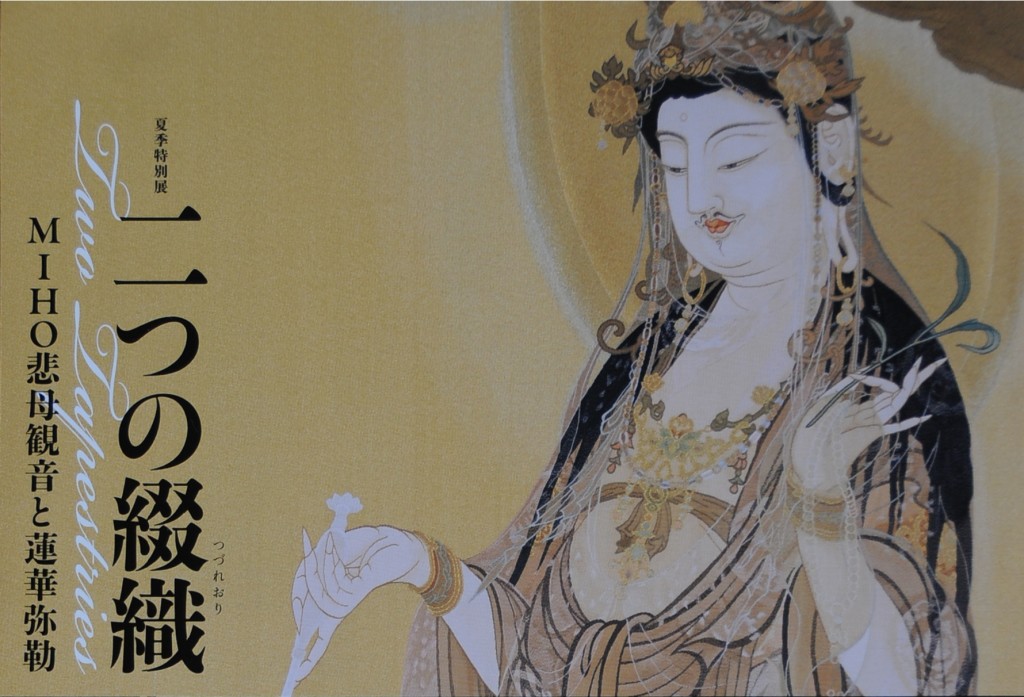
The permanent exhibition is exquisite, albeit small. They have a beautiful little statue of Horus, made from silver, gold, and lapis lazuli, that apparently was once the main deity of an Egyptian temple. There was also a standing Buddha statue, some 2.5 metres high I guess, upper body leaning forward just a little bit. It gave me the impression of a father stooping down a little to his children. I really enjoyed the trip although it took much longer than I had expected. The museum is certainly worth a visit, even though it is a bit far from Kyoto.
Now, those were my last three days. Today I had planned a rest day; from Monday on there will be the second yoiyama before the Ato matsuri parade. It should be much more quiet though, but I hope the friend with whom I will watch it will like it too.
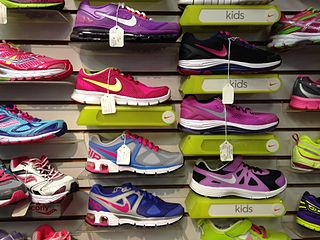 Today is another one of those Japanese “Happy Monday Holidays”, it is called taiiku no hi, the Health and Sports Day, held every year on the second Monday in October. It originated in 1966, two years after the Summer Olympics took place in Tokyo, and it is meant to promote an active and healthy lifestyle, both physically and mentally, interestingly.
Today is another one of those Japanese “Happy Monday Holidays”, it is called taiiku no hi, the Health and Sports Day, held every year on the second Monday in October. It originated in 1966, two years after the Summer Olympics took place in Tokyo, and it is meant to promote an active and healthy lifestyle, both physically and mentally, interestingly.


